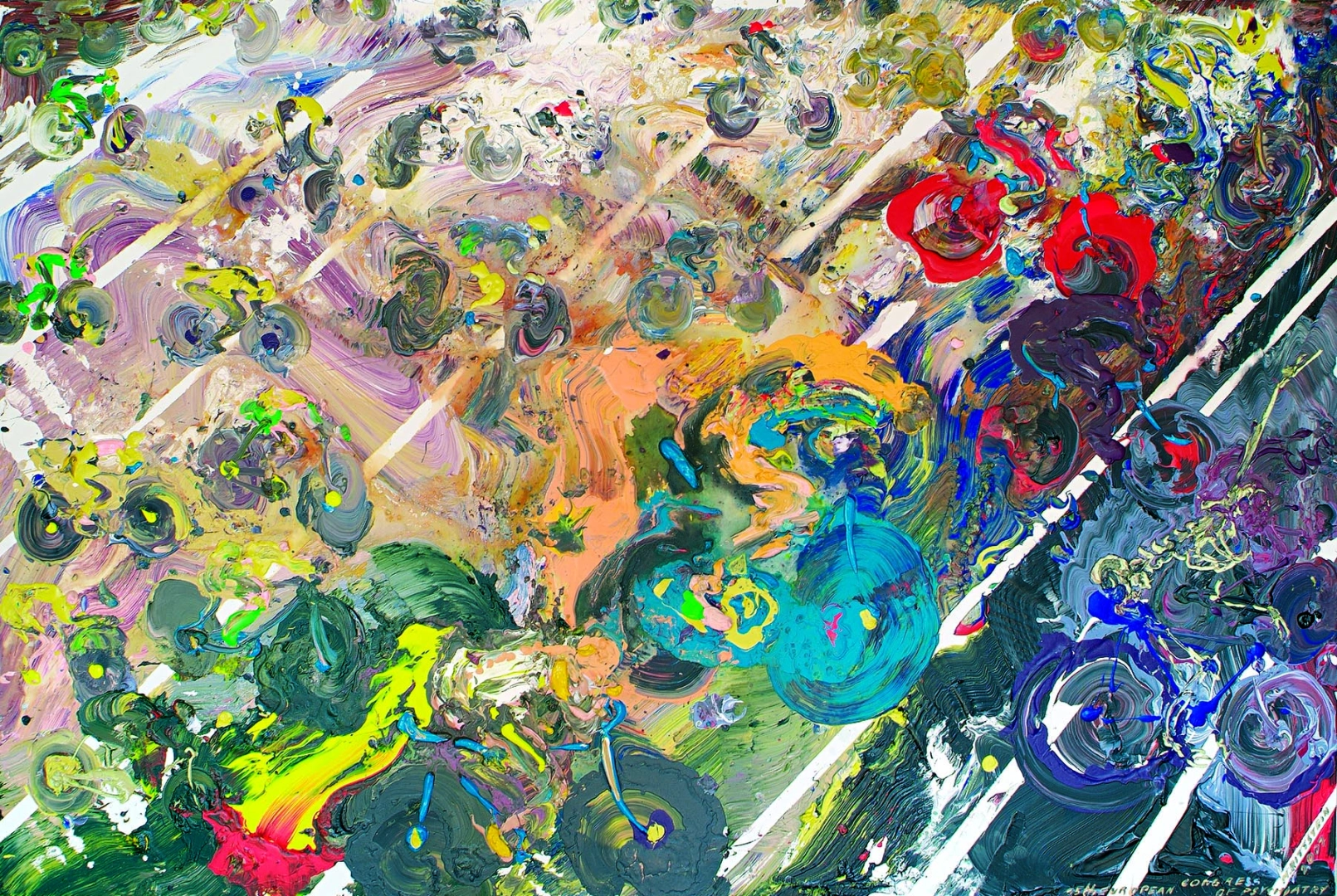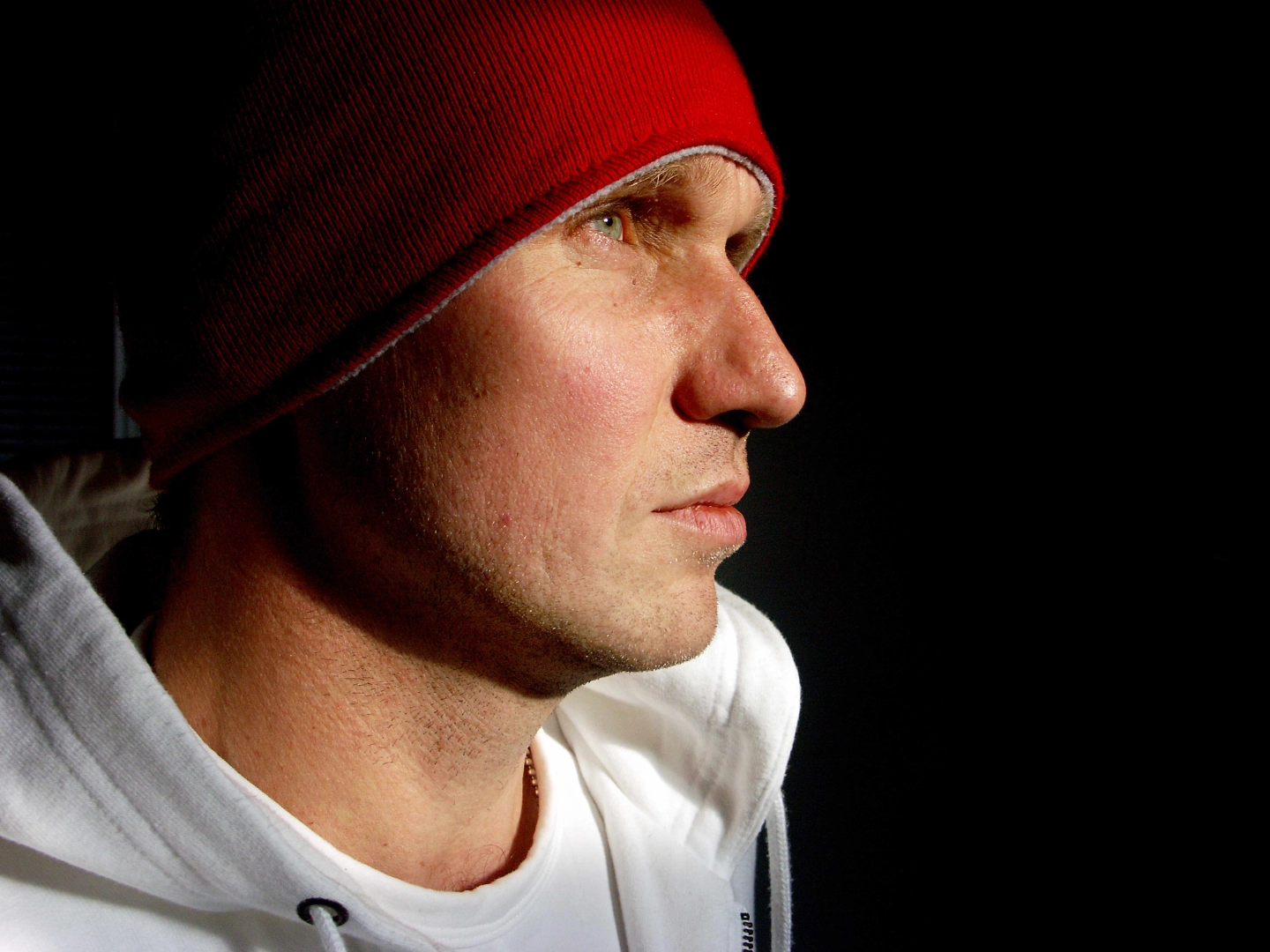The Tour de France, the greatest cycling race in the world, has just started. When I think about cycling, which I fell in love with, I often recall Michael Rittstein's painting The Cycle of Life. It's in fact not about the Tour de France itself, but I consider it the essence of racing. It's three meters long and two meters tall. A peloton of rides frantically rushes forward to catch up with the rider in the front, but they can't do it anymore; they began to spurt too late or were too slow. You see a whole, the painting comes across compact, dynamic and wild, as is typical for Rittstein. If you take a closer look, you'll see that the winner was a skeleton rejoicing in its own dominance and invincibility. It is a painting one will remember; it presents the eternal desire to reach the highest goal, regardless of what hides behind it and how much effort it costs. A metaphor for the modern performance-oriented civilization!
How The Cycle of Life came into existence is as interesting as its message, composition, colorfulness and technical execution.
.jpg)
It all began with an invitation from professor Cyril Höschl to a psychiatric congress in Madrid focused on the relationship of science and art. The painter accepted. He was not to lecture or listen; he was invited to create. Michael Rittstein painted The Cycle of Life in 2007 in front of three and a half thousand psychiatrists from all over the world during the opening ceremony! A cameraman captured the details of what he was doing: every new brush stroke was shown on a large screen, as well as the metamorphoses of his expression. The art piece served the psychiatrists as a reflection of the painter's psyche.
In two hundred minutes (which is the duration of some mountain stages of the Tour de France), a large-scale painting was created, for which the painter received applause on an open stage for the first time in his life. "It was a unique experience," Michael Rittstein recalled and added: "because painting is an activity where you're all alone. All of a sudden I had an audience of thousands. It wasn't an improvisation, I had known in advance what I was going to paint. I wasn't stressed, but I was enjoying it all."
.jpg)
Cyclists are said to be the fittest motif for such painting because one can paint them without details and yet everything substantial gets on the canvas. They are the essence of dynamic movement pushing forward without a break. Something like this can only be done by a person able to accept a challenge: on one hand, they're well aware of their abilities and at the same time they want to reach the their limits, because without this they couldn't improve.
The relation to sports is obvious; they are two connected vessels.





